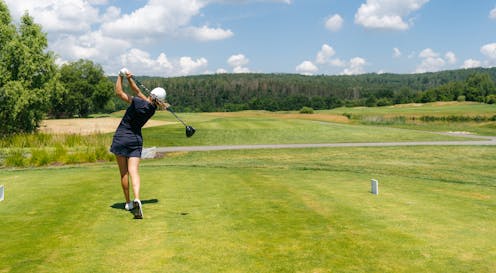Source: The Conversation (Au and NZ) – By Michelle O’Shea, Senior Lecturer, School of Business, Western Sydney University
Prestigious Victorian golf club 13th Beach Golf Links, famed for award-winning courses and hosting the Victorian Open, has found itself in the middle of a controversy.
In a bid to bolster membership, diversity and revenue, the club has introduced additional membership categories for women. These memberships form part of a dedicated campaign to get more women on the greens, following a member and board supported strategic plan to grow women’s membership from 18% to 30% by 2027.
Despite the club’s commitment to gender representation, its status as a signatory to The Royal & Ancient Golf Club of St Andrews (R&A)’s Women in Golf Charter and recognition as a 2023 Visionary of the Year by Golf Australia for its “whole-club approach to gender equity”, support among some members remains wanting.
A stunt that made waves
Controversy erupted at 13th Beach after its new women’s memberships were launched.
One male member, wearing a blonde wig and skirt, was captured approaching club staff to inquire about the new women’s membership options, remarking:
I’m identifying as a female now and I’m just about to inquire about the new membership deal.
The male member, and two others who filmed and shared the footage, were temporarily suspended from the club.
A key element to the controversy is the discounted membership compared to male golfers.
After the stunt, some men and women claimed:
[The club] openly discriminates against males […] it is both fair and just for female members to pay the same subs as their male counterparts, as equality is a fundamental principle that we should uphold.
However, this statement conveniently denies the sport’s current and past issues with gender, race and class.
Historical and current barriers
Globally year-on-year, the growth of male golf participation outnumbers women, with women making up 23% of adult registered golfers worldwide.
In Australia, golf participation rates continue to rise. Among women and girls, Golf Australia reported a near 13% increase from 2022–23.
Despite this rise, access issues and barriers to full participation for women and girls run deep.
A lack of visibility of female golfers can reinforce stereotypes of golf as a men’s game, while women can struggle with amenities and equipment designed for men.
Golf is steeped in gendered, raced and classed exclusion, and was traditionally a sport for men of similar social standing.
Women were confined to secret games or putting activities, away from the “real” golf played by men.
Women were banned from golf’s spiritual home, St Andrews in Scotland, for 260 years – until a 2014 vote when female membership was finally permitted.
Two years earlier, premier United States course Augusta National welcomed its first women members.
An uneven playing field
Despite recent improvements, women’s golf participation and membership access frequently remain conditional.
Traditionally in Australia, women and girls have been restricted to “associate” or “lady” memberships – which often have lower status and fewer benefits.
Course access can also be problematic, with Saturdays often reserved for male players.
At many Australian clubs, Tuesdays are often referred to as “ladies day” which assumes women don’t have work or other commitments.

Women members are often allotted less popular tee times while overall, some club cultures can render golf courses chilly climates for women.
Being scrutinised and surveilled on the greens by male golfers is reported by women as a barrier – feelings of hyper-visibility, being mocked for their play and their bodies frequently undermines women’s enjoyment.
At the professional level, while the women’s game is increasing in prize money, media coverage and sponsorship, there is still significant room for change.
For female professional golfers, research also highlights a male-dominated and “sexist environment”.
Inclusivity is good for everyone
In a bid to increase participation among more diverse groups, Golf Australia is inspiring people to “go play and enjoy golf in their own way”.
As part of its “own way campaign,” programs have been designed for seniors, women and disabled players.
Recognising how differences such as race and culture shape golf participation, more community-facing programs are targeting improved diversity.
Off the greens, golf leadership and administration is also under the spotlight.
Including women’s voices in decision making is key to realising meaningful change – research clearly finds boards with diversity of thought and representation perform better.
Beyond the important inclusivity debates, there are clear commercial reasons to enable women’s participation.
Very recent industry research states there are an estimated 36.9 million latent women golfers around the world, and this group may be worth up to US$35 billion (A$51 billion) to the golf industry should they take up the sport more permanently.
Golf has a lucrative opportunity.
Valuing and enabling diversity in all areas should fill the coffers and genuinely position golf as a sport for all.
![]()
The authors do not work for, consult, own shares in or receive funding from any company or organisation that would benefit from this article, and have disclosed no relevant affiliations beyond their academic appointment.
– ref. Swing and a miss? Why golf in Australia is struggling to attract women and girls – https://theconversation.com/swing-and-a-miss-why-golf-in-australia-is-struggling-to-attract-women-and-girls-239202









